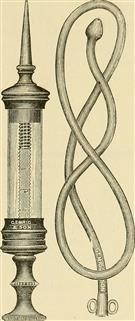The Infertility Org
Secondary Infertility and Depression
We have the top source for complete info and resources for Secondary Infertility and Depression on the web.
An estimated 28% of all couples seeking reproductive assistance may have normal findings on their clinical evaluation, making the unexplained infertility a more common provisional diagnosis. Aetiology of Congenital Absence of Vas Deferens: Genetic Study of Three Generations. (PDF, 4 MB) Human Reproduction, 1993. Infertility tests for men The doctor will ask the man about his medical history, medications, and sexual habits and carry out a physical examination.
The views expressed in this material are those of the authors, and do not reflect the official policy or position of the U. Sertoli Cell only Revisited. (PDF, 1 MB) Human Reproduction, 1995. PDF Articles by Decade: 1970s | 1980s | 1990s | 2000s | 2010s ARTICLES FROM THE 1970s Active Lupus Glomerulitis and Hematoxylin Bodies with Normal Urinalysis. (PDF, 5 MB) The Journal of Urology, 1971.
Even more Information Around Secondary Infertility and Depression

Here are Some More Resources on Infertility Genetic Incompatibility
She records this temperature on a sheet of graph paper. Surgical Management of Male Infertility. (PDF, 2 MB) Chapter 12 from textbook, Male Infertility, 1992. Gonadotropin-releasing hormone (Gn-RH) analogs: These can help women who ovulate too early—before the lead follicle is mature—during hmG treatment. Intra-uterine insemination for male subfertility. If oligospermia or azoospermia is noted, hypogonadism should be suspected.
More Details Around Secondary Infertility and Depression
Radiation therapy: If this is aimed near the reproductive organs, it can increase the risk of fertility problems. Affected individuals displayed more severe forms of infertility such as azoospermia and severe oligozoospermia.[27] Other causes[edit] Factors that can cause male as well as female infertility are: DNA damage DNA damage reduces fertility in female ovocytes, as caused by smoking,[28] other xenobiotic DNA damaging agents (such as radiation or chemotherapy)[29] or accumulation of the oxidative DNA damage 8-hydroxy-deoxyguanosine[30] DNA damage reduces fertility in male sperm, as caused by oxidative DNA damage,[31] smoking,[28] other xenobiotic DNA damaging agents (such as drugs or chemotherapy)[32] or other DNA damaging agents including reactive oxygen species, fever or high testicular temperature.[33] The damaged DNA related to infertility manifests itself by the increased susceptibility to denaturation inducible by heat or acid [34] or by the presence of double-strand breaks that can be detected by the TUNEL assay.[35] General factors Diabetes mellitus,[36][37] thyroid disorders,[38] undiagnosed and untreated coeliac disease,[39][40][41][42] adrenal disease[43] Hypothalamic-pituitary factors Hyperprolactinemia Hypopituitarism The presence of anti-thyroid antibodies is associated with an increased risk of unexplained subfertility with an odds ratio of 1. Antisperm antibodies may form when the blood-testis barrier is breached because of infection, vasectomy, testicular torsion, cryptorchidism, or testicular trauma. Laparotomy is indicated in patients with severe pelvic adhesions that compromise the bowel, ovaries, and tubes, with obliteration of the cul-de-sac. [129] The aim of the procedure is to correct what is necessary to allow the normal transport of the gametes; complete restoration of the anatomy is not intended. [130] Lysis of adhesions should be meticulous, using hydrodissection and fine instruments.
More Info About Infertility Genetic Incompatibility
Tubal and peritoneal factor infertility treatment requires a good surgeon who is skilled in currently available techniques. [128] The patient's age and the severity of the tubal pathology play important roles in the selection of patients, as do any other infertility issues such as the presence of endometriosis and severe pelvic adhesions. Signs of Potential Infertility in Women In women, changes in the menstrual cycle and ovulation may be a symptom of a disease related to infertility. Surgical sperm aspiration: The sperm is removed from part of the male reproductive tract, such as the vas deferens, testicle, or epididymis. 8,26,27 As opposed to laparoscopy or hysteroscopy, hysterosalpingography is a minimally invasive procedure with potentially therapeutic effects and should be considered before more invasive methods of assessing tubal patency. For some women, these devices do not detect the LH surge, or high levels of LH are a poor predictor of ovulation; this is particularly common in women with PCOS. Ovarian Hyperstimulation Syndrome (OHSS) The syndrome occurs due to treatment with medicamentous ovulation inductors. Understanding what defines normal fertility is crucial to helping a person, or couple, know when it is time to seek help. Ross says it might suggest a blockage in the “plumbing” that can be corrected with surgery. CI or intrauterine insemination is the treatment of choice if more than 2 million sperm are recovered after the sperm wash. (See Treatment of Cervical Factors). [106, 109] Patients whose reproductive tract, FSH, LH, and testosterone levels are determined to be normal or those who have low testosterone in the absence of any other hormonal abnormalities can be treated empirically with cycles of CC (25 mg PO qd for at least 6-12 mo). Bromocriptine (Parlodel): This drug inhibits prolactin production. Although tubal disease was the original indication for IVF, many more indications have developed over the years. The vas deferens carries sperm from the epididymis to the ejaculatory duct and the urethra. Contents Definition[edit] "Demographers tend to define infertility as childlessness in a population of women of reproductive age," whereas "the epidemiological definition refers to "trying for" or "time to" a pregnancy, generally in a population of women exposed to" a probability of conception.[8] Currently, female fertility normally peaks at age 24 and diminishes after 30, with pregnancy occurring rarely after age 50.[9] A female is most fertile within 24 hours of ovulation.[9] Male fertility peaks usually at age 25 and declines after age 40.[9] The time needed to pass (during which the couple tries to conceive) for that couple to be diagnosed with infertility differs between different jurisdictions. Testicular neoplasia, commonly producing estrogen, usually causes infertility.
Previous Next
See also
Infertility Fellowship Courses in India
Genetic Engineering Infertility Treatment
Causes of Infertility and Sterility